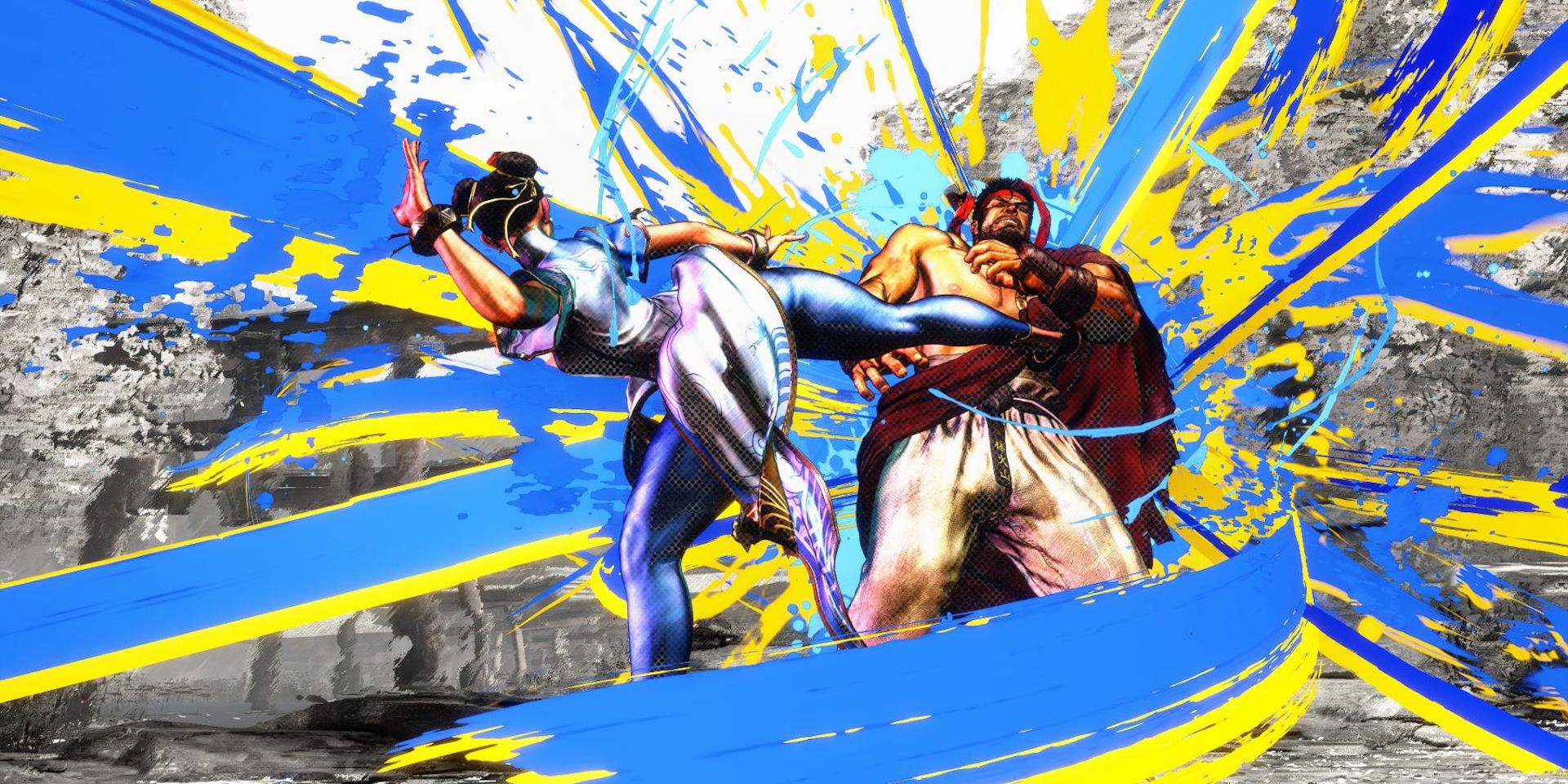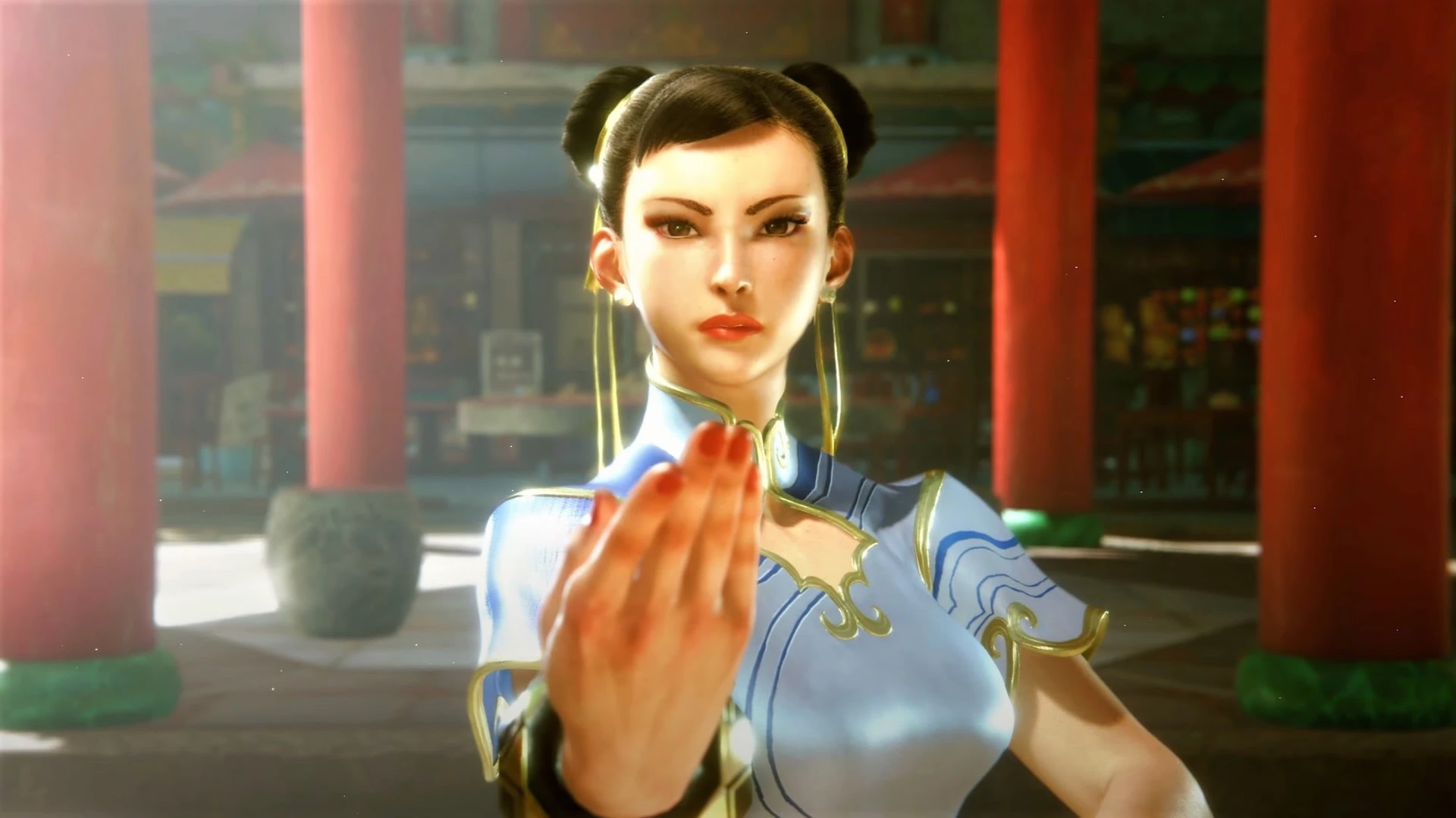Anyone who ever played Street Fighter will attest to the "personality" of the Street Fighter art. The looks of Chun-Li, Ryu, M. Bison, Akuma, and the other great characters in the roster are etched into our brains, right next to the button sequences for combos and super combos. Etched quite strongly, we may add: the very moment someone mentions "Chun-Li" or "Zangief" in conversation, we are able to "picture" them.

article
Street Fighter art: fighting for legibility
The role of art in fighting games.
Arjan Terpstra
27 Jun 2022 ⋅ 5 min read
Interested in Street Fighter art? Click the link to find our official Street Fighter fine art collection!
Anyone who ever played Street Fighter will attest to the "personality" of the Street Fighter art. The looks of Chun-Li, Ryu, M. Bison, Akuma, and the other great characters in the roster are etched into our brains, right next to the button sequences for combos and super combos. Etched quite strongly, we may add: the very moment someone mentions "Chun-Li" or "Zangief" in conversation, we are able to "picture" them.
Anyone who ever played Street Fighter will attest to the "personality" of the Street Fighter art. The looks of Chun-Li, Ryu, M. Bison, Akuma, and the other great characters in the roster are etched into our brains, right next to the button sequences for combos and super combos. Etched quite strongly, we may add: the very moment someone mentions "Chun-Li" or "Zangief" in conversation, we are able to "picture" them.
How does Capcom do that? Street Fighter games may have been on the market since 1987, and were crucial to defining the genre, but the competition has always been fierce. And yet it takes no effort to tell a Chun-Li from a Blaze Fielding (Street of Rage), or an Akuma from a Kage-Maru (Virtua Fighter). How is this possible?
The answers lie in the Street Fighter art, explains Toshiyuki Kamei, Art Director for Street Fighter IV and V. In a talk called "The Art Direction of Street Fighter V: The Role of Art in Fighting Games," he detailed the pivotal role of art in communicating the game to the players.
In this talk, he speaks at length about the importance of two things: legibility, and the personality of the art. Legibility, from a player's perspective, means the art shown on a screen is easy to follow and understand. Personality, in art, means it has character, style.
And while legibility and personality look like two distinct traits in game art, they actually are the same thing. Take the character's aesthetic: they are defined by heavy musculature, clear outlines, and deformed proportions.
Art direction
The answers lie in the Street Fighter art, explains Toshiyuki Kamei, Art Director for Street Fighter IV and V. In a talk called "The Art Direction of Street Fighter V: The Role of Art in Fighting Games," he detailed the pivotal role of art in communicating the game to the players.
In this talk, he speaks at length about the importance of two things: legibility, and the personality of the art. Legibility, from a player's perspective, means the art shown on a screen is easy to follow and understand. Personality, in art, means it has character, style.
Muscles
And while legibility and personality look like two distinct traits in game art, they actually are the same thing. Take the character's aesthetic: they are defined by heavy musculature, clear outlines, and deformed proportions.
The simple explanation for details like Ryu's thick neck or Chun-Li's oversized thighs is that they communicate how strong and cool these characters are. In other words, they give the art personality.
And yet legibility takes absolute precedence over the stylistic qualities: the oversized muscles and deformed physics (large feet, bulky chests, but also things like exaggerated facial expressions) help communicate what actions a character performs.
Arm muscles will stretch when a character punches, become smaller and longer in the process, and the change will trigger a response in players, igniting the dance of action-reaction that is a fighting game. The same is true for Ryu's oversized feet: they indicate the karateka's reliance on kicks, and inform the player of the direction of each kick in ways a normal foot size would not.
Capcom pushes these traits to their extremes, often exceeding the logical limits of a human body, to achieve the desired effects. Why is this important? On-screen, the characters are relatively small—the camera will be pulled away from them, to show the two fighters plus the fighting arena they're in. "By deforming and exaggerating their shapes we can actually convey a lot of information very quickly."
Still, this does not mean you have to keep realistically-looking characters from a Street Fighter fight. And yet this is not the route Capcom is willing to go.
Large feet
And yet legibility takes absolute precedence over the stylistic qualities: the oversized muscles and deformed physics (large feet, bulky chests, but also things like exaggerated facial expressions) help communicate what actions a character performs.
Arm muscles will stretch when a character punches, become smaller and longer in the process, and the change will trigger a response in players, igniting the dance of action-reaction that is a fighting game. The same is true for Ryu's oversized feet: they indicate the karateka's reliance on kicks, and inform the player of the direction of each kick in ways a normal foot size would not.
Camera
Capcom pushes these traits to their extremes, often exceeding the logical limits of a human body, to achieve the desired effects. Why is this important? On-screen, the characters are relatively small—the camera will be pulled away from them, to show the two fighters plus the fighting arena they're in. "By deforming and exaggerating their shapes we can actually convey a lot of information very quickly."
Still, this does not mean you have to keep realistically-looking characters from a Street Fighter fight. And yet this is not the route Capcom is willing to go.
Chun-Li in promotional art for Street Fighter IV games. Official Street Fighter art from various games is available from this website as fine art print. Check the section Video Game Art in the navigation bar or click here!
Game loop
To understand the reason behind this, we have to look at what game designers call the "game loop." With this phrase, they mean the ongoing dance players perform when they interact with the software.
The core game loop for Street Fighter games is centered on the fights, obviously. A player presses a button on his controler to initiate an action in his fighter character. The software translates this to actions in-game, which feeds back to the player through the game visuals and audio. The player takes this feedback in, and responds to the new situation on-screen by pressing new buttons, closing the game loop.
Split second decisions
For games like Street Fighter, this "game loop" plays out throughout each fight, multiple times. A decision to punch or parry is a split second decision—incredibly, players will make up to sixty decisions per second, in every second of a fight!
Legibility—how you "read" what's happening in the fighters—is of fundamental importance to make this game loop work. "We're always thinking about how we give the player the information they need," Kamei says. And yes, they tried a more realistic M. Bison, Ryu, and Cammy, but that didn't improve the legibility. To Capcom, the bottom line is simple: bigger muscles give better information to the player!
Hierarchy
And it's only after Capcom achieves this lofty goal of easy to understand and legible art, that Kamei's team moves to create the unique Street Fighter art style. In other words, there's a strict hierarchy to what the team does: first secure the way information is communicated to players, and then bring personality to the characters through the art style, the character animations and game music and audio.
The bigger-than-life characters get color coded to separate them in-game, sets are lit in indirect light, and special effects are added to the scene. Character models are turned 5 degrees towards the camera at all times, so we see more of the front of the body, and thus understand the action better. A brushstroke style applied to skin and fabrics breathes more life into the characters. Backgrounds get a muted color treatment, saving bright colors for the fighters.
Et cetera, et cetera—there's an incredible amount of artistic trickery involved in this type of game art. Combined, they all work towards one goal: giving you that exciting experience of being part of an epic fight, between two iconic characters you will forever remember.


